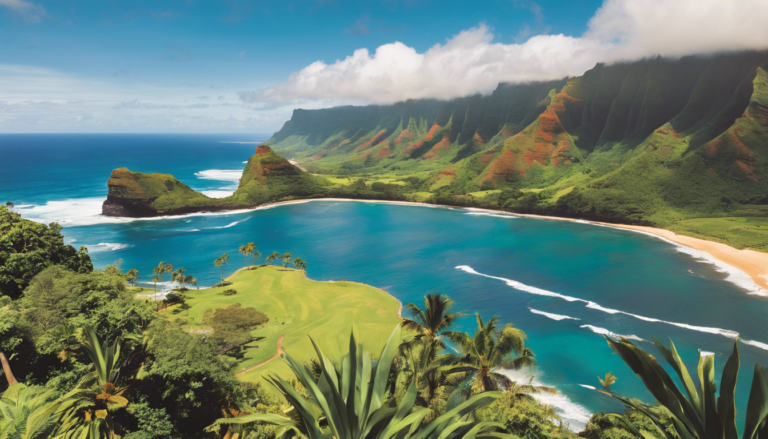Embarking on a journey through Japan’s most iconic cities—Tokyo, Kyoto, and Osaka—provides an unparalleled opportunity to experience the diverse cultural and historical tapestry of this captivating country. Renowned as the best route for experiencing Japan, this tri-city adventure offers travelers an enriching exploration of the nation’s dynamic urban landscapes and timeless traditions. Selecting the best route for Japan, especially one that features Tokyo, Kyoto, and Osaka, is vital for anyone aiming to uncover the essence of Japanese culture and history within a single itinerary. Each city boasts a unique identity: from Tokyo’s seamless blend of tradition and modernity, through Kyoto’s rich cultural heritage, to Osaka’s status as a vibrant culinary and entertainment hub. By following this optimal route, visitors not only enjoy the beauty and heritage found in Japan’s metropolitan areas but also gain insight into the country’s innovative ethos, traditional charm, and its historically rich past. This enticing journey promises to captivate the senses and broaden horizons, making it a must for all who wish to fully engage with Japan’s multifaceted allure.
When embarking on the journey to explore the best route for Japan—Tokyo, Kyoto, and Osaka—travelers are drawn to the unique blend of cultural richness and modern sophistication that each city epitomizes. With Tokyo’s bustling metropolis showcasing futuristic technology against a backdrop of historical sites, Kyoto’s serene temples and traditional tea houses offering a glimpse into ancient Japan, and Osaka’s vibrant culinary scene and entertainment districts bustling with energy, this route encapsulates the essence of Japanese heritage, culture, and innovation.
Choosing this sequence—Tokyo, Kyoto, and Osaka—holds significance beyond logistical convenience. Travel enthusiasts and culture seekers alike recognize the profound experiences that arise from engaging with these cities in a manner that reflects Japan’s inherent dichotomy between relentless innovation and an enduring respect for tradition. By initiating your expedition in Tokyo, you set the stage for an introduction to Japan’s dynamic, ever-evolving identity, before transitioning to Kyoto’s quietude and Osaka’s eclectic vigor.
Exploring Tokyo unveils a city where gleaming skyscrapers coexist harmoniously with age-old temples. The best route for Japan—Tokyo, Kyoto, and Osaka—inevitably begins with Tokyo, a mecca for innovation and cultural reflection. Popular attractions that command the attention of any traveler include the historic Asakusa district, home to Senso-ji Temple, the city’s oldest, where the air is thick with the aroma of incense and the sounds of omikuji (fortune-telling slips) reverberate. Engage in a peaceful stroll through the Meiji Shrine, nestled amid a tranquil forest glade, offering a serene retreat from urban fray.
For dive into the ultramodern, a visit to Shibuya and its iconic scramble crossing cannot be missed, embodying Tokyo’s perpetual motion and electrifying pace. Shinjuku, with its shimmering skyline and vibrant nightlife, is a neighborhood that never sleeps, offering countless opportunities for exploration with its myriad of bars, restaurants, and shopping destinations. For a panoramic view of the sprawling metropolis, the Tokyo Skytree offers a vantage point like no other, allowing visitors to marvel at the city’s limitless expanse.
The significance of Tokyo as the starting point on the best route for Japan—Tokyo, Kyoto, and Osaka—lies in its function as a cultural and economic hub. It draws travelers into its kinetic embrace, serving as the gateway to understanding contemporary Japan, while its historical enclaves provide context to the nation’s enduring culture. To maximize your visit, consider purchasing a prepaid Suica or Pasmo card for seamless travel across Tokyo’s vast rail and metro networks, making it easy to navigate between attractions and districts.
Making the transition from the capital city to Kyoto, recognized as the heart of Japan’s culture, travelers discover the tranquility and deep-seated tradition that define this historical jewel. Easily accessible by the Tokaido Shinkansen, Japan’s renowned bullet train, Kyoto presents a landscape dotted with wooden tea houses, meticulously pruned gardens, and a tapestry of shrines and temples. As the cultural and spiritual center of Japan, Kyoto offers an immersion into the storied past through sites like Kinkaku-ji (the Golden Pavilion), a UNESCO World Heritage Site gleaming with gold leaf, reflecting exquisitely on the surrounding pond’s serene waters.
The Philosopher’s Path, lined with cherry blossoms during spring, serves as a picturesque passage among Zen temples such as Nanzen-ji, inviting contemplative walks and moments of introspection. No visit to Kyoto is complete without experiencing a traditional tea ceremony, an art form that encapsulates Japanese aesthetic and philosophy. Similarly, the district of Gion, known for its historical wooden machiya houses and as a hub for geisha culture, offers insight into the city’s deep-rooted traditions.
Navigating the best route for Japan—Tokyo, Kyoto, and Osaka—emphasizes Kyoto’s role in preserving culture and tradition. To fully engage with Kyoto’s heritage, travelers are encouraged to don kimono rentals, available at numerous locations throughout the city, providing a deeper connection to the town’s elegance while offering enchanting photo opportunities against the traditional Kyoto backdrop.
Concluding the journey in Osaka, the culinary and entertainment hub of Japan, marks a shift to electrifying vigor and appetizing adventures. Known for its spirited locals, or Osakans, the city pulses with energy around the clock, offering an eclectic mix of attractions that cater to all tastes. Don’t miss exploring the lively district of Dotonbori, lit by towering neon displays and adorned with mechanized signs that tout Osaka’s gastronomic prowess. Here, treat your taste buds to authentic street snacks like takoyaki (octopus balls) and okonomiyaki (savory pancakes) that are quintessentially Osakan.
Osaka Castle, a symbol of the city’s rich history, stands majestically amid a lush park, inviting history aficionados to delve into Japan’s feudal past. Meanwhile, the district of Namba, with its myriad of entertainment venues, from theaters and shop arcades to themed cafes and clubs, anchors Osaka’s reputation as an entertainment powerhouse. Travelers are encouraged to obtain an Osaka Amazing Pass, which offers discounts and free entry to numerous attractions, enabling a budget-friendly exploration of the city’s diverse offerings.
Ending the exploration in Osaka on the best route for Japan—Tokyo, Kyoto, and Osaka—not only satisfies a wanderer’s palette for culture and cuisine but affirms Japan’s multifaceted identity. Travelers leave with a resonating understanding of Japan’s past, present, and future, having tread the path of emperors, shoguns, and sushi chefs alike.

II. Detailed Exploration of the Journey
A. Discovering Tokyo: A Blend of Tradition and Modernity
1. Key attractions and unique experiences in Tokyo
Tokyo, Japan’s bustling capital, offers a mesmerizing blend of ultramodern skyscrapers, traditional temples, and an array of cultural experiences. As the first stop on the best route for Japan: Tokyo, Kyoto, Osaka, Tokyo sets the stage for an unforgettable journey through the Land of the Rising Sun.
Start your Tokyo exploration with a visit to the iconic Tokyo Tower or the towering heights of the Tokyo Skytree, both offering panoramic views of the sprawling metropolis. For a taste of tradition, venture to the historic Asakusa district and visit the renowned Senso-ji Temple, Tokyo’s oldest Buddhist temple, where you can experience centuries-old rituals.
Shoppers and fashion enthusiasts will be drawn to the upscale district of Ginza, known for its luxury boutiques and vibrant nightlife. Meanwhile, Harajuku offers a glimpse into Tokyo’s eccentric fashion scene, while the bustling streets of Akihabara cater to anime and electronic gadget enthusiasts.
Tokyo also boasts a unique culinary scene that is a draw in itself. Indulge in fresh sushi at the famed Tsukiji Outer Market or experience the bustling energy of an Izakaya in the Shinjuku district. The city’s Michelin-starred restaurants and street food stalls provide ample opportunities to satisfy every palate.
2. Ideal itinerary tips for maximizing your time in the city
To maximize your Tokyo experience, consider starting your day early to avoid crowds at popular attractions. Combine visits to close-proximity sites to make the most efficient use of your time. For example, explore the serene Meiji Shrine before heading to the vibrant Shibuya Crossing, one of the most photographed intersections in the world, just a short train ride away.
Utilize Tokyo’s excellent public transportation system, particularly the JR Yamanote Line, which loops around the city and connects many of the top attractions. This will save you time and help you navigate the city with ease.
Given Tokyo’s vast array of neighborhoods, setting a thematic plan for each day can enhance your experience. Dedicate a day to exploring the traditional charm of Ueno Park, where you can visit museums and stroll through cherry blossom-lined paths during spring. Another day might focus on the futuristic wonders of Odaiba, home to teamLab Borderless, an interactive digital art museum that promises a unique visual experience.
Finally, consider the Tokyo Disney Resort or Tokyo Sea Life Park for family-friendly excursions, ensuring a comprehensive experience of Tokyo’s multifaceted appeal as you embark on the best route for Japan: Tokyo, Kyoto, Osaka.
B. Unveiling Kyoto: The Heart of Japan’s Culture
1. Must-visit cultural and historical sites in Kyoto
Transitioning to Kyoto, the journey along the best route for Japan: Tokyo, Kyoto, Osaka continues to the ancient capital known for its rich cultural and historical tapestry. Kyoto is a city where time seems to stand still, allowing visitors to step back and savor the traditions that have thrived over centuries.
Kyoto’s iconic Kinkaku-ji, or the Golden Pavilion, stands as a symbol of zen-like tranquility with its stunning architecture overlooking a reflective pond. Another must-visit is Fushimi Inari Taisha, famous for its thousands of vermillion torii gates that create a mystical path up Mt. Inari.
Also notable is the serene Arashiyama Bamboo Grove, where towering bamboo stalks create a natural, ethereal atmosphere. Nearby, the historic town of Arashiyama features the picturesque Togetsukyo Bridge and opportunities for a traditional tea ceremony.
Higashiyama’s historic districts, including Gion, offer a glimpse into Kyoto’s storied past with well-preserved wooden machiya houses and the chance to see geisha gracefully traversing the streets. Gion Corner and the city’s various cultural performances are perfect for experiencing local art forms like Kabuki and tea ceremonies.
2. Best practices for an immersive cultural experience
To gain a truly immersive experience in Kyoto, consider staying in a traditional ryokan, where you can enjoy Japanese hospitality and savor authentic kaiseki meals. Engaging in a tea ceremony, renting a kimono for a day, or participating in a local cooking class can further enrich your cultural journey.
Plan your visit to coincide with Kyoto’s annual festivals, such as the Gion Matsuri in July or the Arashiyama Hanatoro in December, to witness vibrant processions, floats, and illuminations that showcase the city’s enduring traditions.
For a quiet reflection, visit some of Kyoto’s lesser-known temples and gardens, where you can find moments of peace away from bustling tourist spots. The Nanzen-ji Zen Temple and its surrounding gardens offer a tranquil escape for meditation and contemplation.
Ultimately, exploring Kyoto is a pilgrimage through Japan’s cultural heart, where ancient traditions harmoniously coexist with the rhythm of modern life, offering an essential stop along the best route for Japan: Tokyo, Kyoto, Osaka.
C. Vibrant Osaka: Japan’s Culinary and Entertainment Hub
1. Top attractions and culinary delights in Osaka
The final leg of the best route for Japan: Tokyo, Kyoto, Osaka brings you to Osaka, a city renowned for its vibrant street life, delicious food, and booming entertainment industry. Known as Japan’s Kitchen, Osaka’s culinary scene is an adventure in itself.
Dotonbori, Osaka’s lively district, is the place to savor iconic dishes like okonomiyaki, a savory pancake, or takoyaki, octopus balls that define the city’s street food culture. Delve into the historic Kuromon Ichiba Market for an authentic taste of fresh regional produce and seafood.
Osaka Castle, a symbol of the city’s rich history, offers insights into Japan’s feudal past. For a touch of whimsy, visit Universal Studios Japan or the Umeda Sky Building for a spectacular view of Osaka’s skyline.
2. Suggestions for enjoying the vibrant nightlife and entertainment
As night falls, Osaka comes alive with an exciting array of nighttime activities. Explore Namba and the Shinsaibashi area, where countless bars and live music venues ensure a lively atmosphere. Karaoke bars and pachinko parlors offer a quintessentially Japanese experience for nightlife enthusiasts.
The entertainment district of Kita, including Umeda, provides a wide range of activities, from theatres showcasing traditional performances to modern cinemas and shopping malls. Consider catching a comedy show at a club featuring Osaka’s own style of Manzai, a form of stand-up comedy.
Whether you’re engrossed in the cultural experiences, gastronomic explorations or simply soaking up the electric atmosphere, Osaka promises an unforgettable conclusion to the journey along the best route for Japan: Tokyo, Kyoto, Osaka.
Embarking on a journey through Tokyo, Kyoto, and Osaka offers an unparalleled exploration of Japan’s rich tapestry of tradition, modernity, culture, and culinary excellence. The route connecting these three iconic cities serves as an exemplar of Japan’s diverse offerings, appealing to both the first-time visitor and the seasoned traveler. Choosing this route is essential for anyone seeking a comprehensive understanding of Japan’s multifaceted identity.
Tokyo, the vibrant capital, effortlessly juxtaposes futuristic skyscrapers with serene historical sites, offering a compelling blend of both worlds. From the bustling streets of Shibuya and the neon lights of Akihabara to the tranquil gardens of the Imperial Palace and the historic Senso-ji Temple, Tokyo caters to a plethora of interests. Travelers can maximize their experience with curated itineraries that balance these contrasting experiences, ensuring a true taste of Tokyo’s dual nature.
The journey then leads to Kyoto, Japan’s cultural zenith. Revered for its well-preserved temples and traditional tea houses, Kyoto is a sanctuary for those wishing to immerse themselves in Japan’s storied past. With sites like Fushimi Inari Shrine, Kinkaku-ji, and the historic Gion district, visitors can embark on a spiritual passage through Japan’s history. Engaging with Kyoto’s unique cultural practices, such as a traditional tea ceremony or a guided tour by a local expert, enriches the experience and deepens understanding of Japan’s cultural heritage.
Concluding the journey in Osaka, the heart of Japan’s culinary scene and entertainment, travelers are greeted with an atmosphere pulsating with energy. The city’s reputation for gastronomic innovation is on display with its array of street food in Dotonbori and upscale dining experiences. Osaka’s attractions extend beyond its cuisine, offering vibrant shopping districts, such as Shinsaibashi, and high-energy entertainment in Universal Studios Japan, each contributing to a dynamic conclusion to the journey.
In essence, the route connecting Tokyo, Kyoto, and Osaka is the best way to experience the essence of Japan. Each city offers a unique narrative, weaving together the country’s ancient traditions, cultural depth, and modern advancements. This journey not only satisfies wanderlust but enriches the traveler’s perspective, leaving a profound appreciation for Japan’s enduring allure. Whether captivated by Tokyo’s modern marvels, moved by Kyoto’s spiritual serenity, or exhilarated by Osaka’s lively pulse, this route provides a tapestry of memorable experiences that encapsulate the spirit of Japan.







